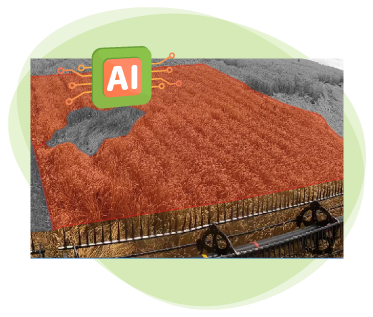Dataset Labeling Tools
Dataset labeling tool is software applications that allow users to annotate or label data sets with relevant information. Learn more here.
Dataset Labeling Tool – Everything You Need to Know
The success of Artificial Intelligence (AI) and Machine Learning (ML) algorithms is heavily dependent on the quality and accuracy of the data used to train them. Labeling data is a crucial step in the data preparation process. It involves assigning relevant tags or labels to data samples, enabling ML algorithms to recognize patterns and make accurate predictions.
However, the labeling process can be challenging, time-consuming, and prone to errors. In this blog, we’ll discuss the importance of dataset labeling tools and the key strategies for ensuring quality and consistency in labeling.
Dataset Labeling Tool – What is its Importance in AI & Machine Learning?

Today’s businesses rely on AI/ML-driven decisions to make profits. Therefore, labeling data is one of the most important steps in training ML models. In addition, to make successful predictions, ML models need high-quality data.
The tool uses a dataset to train the AI model. The training process involves feeding the dataset through an algorithm and then comparing its output with the actual values in your dataset.
With the help of a dataset labeling tool, you can:
- Train your model faster than ever before! It’s easy, efficient, and fast!
- Get high-quality results from the start of your project!
Challenges in Dataset Labeling and Their Solutions
The dataset labeling process can be challenging due to several reasons, including:
- The complexity of data – Some data samples may be complex and require high expertise to label them correctly.
- Varying interpretations – Different labelers may interpret data samples differently, leading to inconsistencies in labeling.
- Large datasets – Labeling large datasets can be time-consuming, leading to errors and inconsistencies.
To address these challenges, AI and ML experts have developed several solutions, including:
- Crowd-sourcing involves leveraging a large pool of labelers to label data samples. As a result, crowd-sourcing can reduce costs and improve efficiency.
- Machine Learning – Machine Learning algorithms can learn to label data samples automatically, reducing the need for manual labeling.
- Outsourcing – Outsourcing labeling tasks to third-party service providers can help reduce costs and improve quality.
Ensuring Quality and Consistency in Labeling
Ensuring quality and consistency in labeling is critical for the accuracy and effectiveness of ML algorithms. To achieve this, organizations must implement several strategies, including:
- Training labelers – Labelers must be adequately trained on the labeling guidelines and standards to ensure consistency and accuracy.
- Verification and validation – Verification and validation of labeled data samples can help identify errors and inconsistencies, ensuring the dataset’s quality.
- Feedback and collaboration – Encouraging feedback and collaboration among labelers can help identify and address labeling challenges, improving the quality and consistency of the dataset.
Establishing Clear Labeling Guidelines
Establishing clear labeling guidelines is critical for ensuring consistency and accuracy in labeling. Guidelines should include specific instructions on labeling data samples, including what tags to use, how to handle complex samples, and what to do in case of uncertainty. The guidelines should also be regularly updated to reflect changes in the data or labeling requirements.
Regularly Monitoring and Updating Labels
Regularly monitoring your dataset labels is a crucial part of maintaining the accuracy of your model. Therefore, keeping tabs on how often you update or add new labels and how often you remove them is important.
Encouraging Collaboration and Feedback
Encouraging collaboration and feedback among labelers can improve the quality and consistency of the dataset. Organizations can use collaboration tools like chat rooms and forums to facilitate communication and collaboration among labelers. Feedback mechanisms, such as surveys and questionnaires, can also help identify labeling challenges and areas for improvement.
Empower Disadvantaged Communities with Subul’s Dataset Labeling Services

The easy and accessible nature of data labeling is a great way to create jobs for those who may need it the most, especially those facing many barriers to employment. Such people may include but are not limited to the following: the unprivileged, people with disabilities, and refugees.
At Subul, we believe when it comes to choosing the best data labeling provider, you must find one that impacts society, such as providing annotation work to the vulnerable in society while providing high-quality data.
By hiring us, you will support many disadvantaged families to make a long-lasting impact on their livelihoods. So what are you waiting for? Let’s create some positive impact together with your data labeling needs.